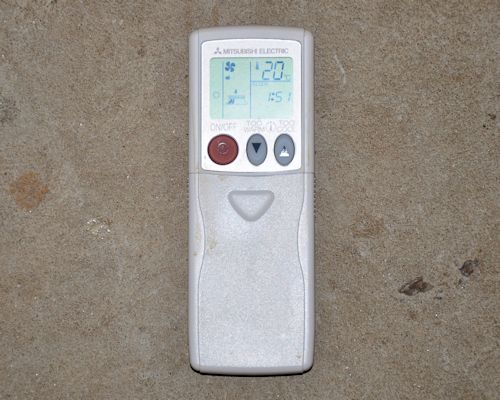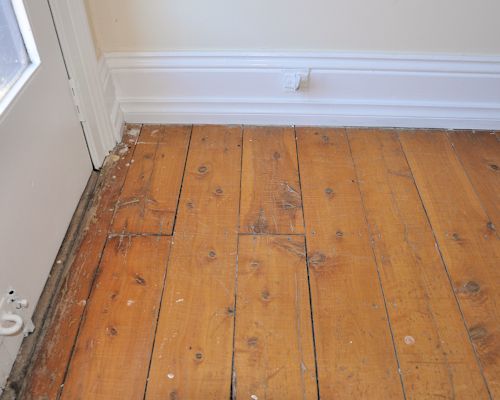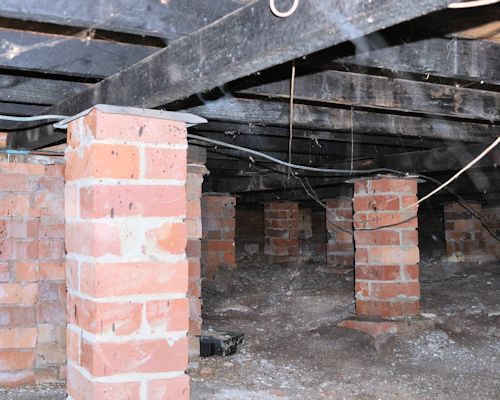Assessing the subfloor
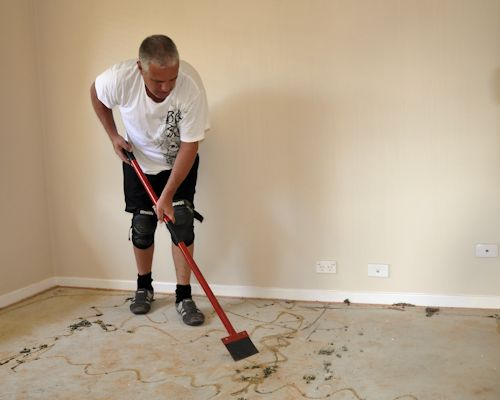 Audio for slide 1 (mp3 |6|KB)
Audio for slide 1 (mp3 |6|KB)
There's a variety of subfloors you're likely to encounter when laying carpet.
We discussed the main subfloor types and typical preparations in the following two units:
So in this lesson we'll summarise these issues by putting them into a set of questions that you should ask yourself before you begin the job.

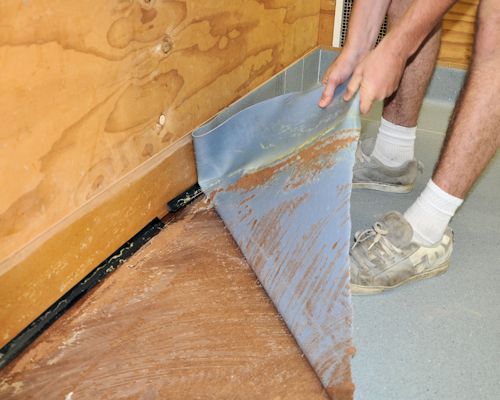 Audio for slide 2 (mp3 |6|KB)
Audio for slide 2 (mp3 |6|KB)
Remember, as the flooring installer it's your responsibility to decide whether the subfloor is suitable and has been adequately prepared.
If you're worried that the substrate isn't suitable, or that there is an underlying problem that might cause trouble later on, don't ignore it.
Check with your supervisor or manager before going ahead.
Everyone will be thankful in the long run, even if it means that there'll be a delay while the problem is fixed.

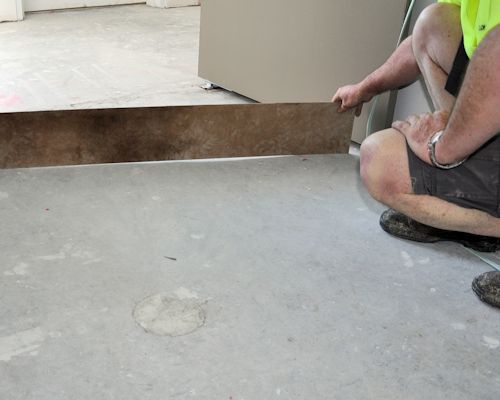 Audio for slide 3 (mp3 |6|KB)
Audio for slide 3 (mp3 |6|KB)
Questions to ask yourself
General issues
- Is the substrate smooth and flat?
AS/NZS 2455 has minimum standards for 'planeness' and smoothness'.
The planeness standard says that when a 3 metre long straight edge is placed on the surface at any position, no part of the surface is allowed to be more than 5 mm below the straight edge.
The smoothness standard says that when a 150 mm long straightedge is placed on the surface at any position, no part of the surface is allowed to be more than 1 mm below the straightedge.
Indentations, ridges and dents can sometimes show through to the surface of carpet.
Ridges also tend to create wear points in areas where there is regular foot traffic or movement of furniture.

 Audio for slide 5 (mp3 |6|KB)
Audio for slide 5 (mp3 |6|KB)
Concrete subfloors
- Are the relative humidity (RH) and alkalinity (pH) levels within the allowable limits?
Excessive moisture in the concrete subfloor can cause the carpet to change shape over time, and also allow fungal spores to develop.
There are limits set for RH and pH, both in the Australian Standards and in the flooring manufacturers' own installation instructions.
The only time you should over-ride these specifications is when an approved moisture barrier is being installed.

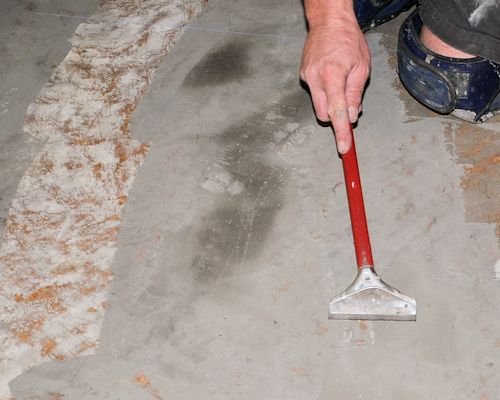 Audio for slide 6 (mp3 |6|KB)
Audio for slide 6 (mp3 |6|KB)
- Is the substrate sound and free from loose, powdery or scaly material?
If the substrate is concrete and you are planning to use adhesives, the surface must be sound and sufficiently porous to allow the adhesive to bond properly.
If you're using nails to secure grippers, the substrate needs to be able to hold the nails without crumbling or cracking.
If it's not in good condition, the affected layer will need to be removed and resurfaced.

 Audio for slide 7 (mp3 |6|KB)
Audio for slide 7 (mp3 |6|KB)
- Are there expansion joints in the floor?
Expansion joints need to be in good condition and free from dirt or obstructions.
You'll need to keep them clear and finish them off with approved cover strips.
Don't get mixed up with relief cuts that have been put into the concrete to stop it from cracking during the curing process.
These will be a 5 mm wide saw cut, and can be filled with a suitable compound.

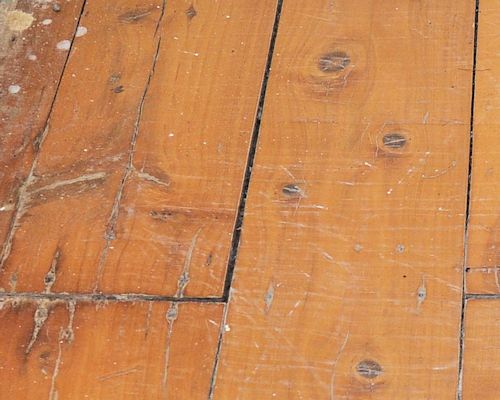 Audio for slide 10 (mp3 |6|KB)
Audio for slide 10 (mp3 |6|KB)
- Are there gaps between boards, protruding nail heads or other surface defects?
Gaps, ridges, cupped boards, protruding nails, and other defects will 'telegraph' through to the surface of the floor covering.
In general, structural floors made from plywood and strip flooring need to have a hard underlay placed on top to provide a flat smooth surface.

 Audio for slide 12 (mp3 |6|KB)
Audio for slide 12 (mp3 |6|KB)
- Has the moisture content (MC) been checked and is it within the allowable limits?
The moisture content of structural members and floor boards or sheets must all be within the allowable MC range.
There must also be no evidence of plumbing or stormwater leaks that might have a long-term effect on the MC.

 Audio for slide 13 (mp3 |6|KB)
Audio for slide 13 (mp3 |6|KB)
Old resilient floor coverings
It is permissible to lay carpet over the top of old resilient coverings, as long as the original surface is in good condition and free from defects such as cracks and bumps.
It is best to avoid using adhesives over an old resilient floor.
One reason is that you would be depending on the old adhesive under the resilient covering to remain sound and not separate from the subfloor.
Another reason is that the new adhesive may not stick well to the top of the resilient covering, especially if it has old polish or ingrained contaminants on the surface.


Learning activity
Audio 14 (mp3 |6|KB)One of the problems you may come across in old floors is asbestos-based products. These need to be removed and disposed of in an approved way.
If you know what to look for, you can often recognise these products by their appearance.
The link below will take you to a website page called 'History and components of asbestos-containing flooring'.
It shows many photos of old lino, vinyl and asphalt floor coverings that contain asbestos.
History and components of asbestos-containing flooring
Have a look at the specific examples of asbestos-based products. Then answer the following questions.
- Have you had to deal with old floor coverings that contained asbestos?
- How did you handle the problem - did you remove the old floor covering first, or cover it with new underlay or flooring?
- What precautions did you take while you were working with the old materials?
If you haven't been personally involved in dealing with asbestos-based products, ask your supervisor or another installer about their experiences.







